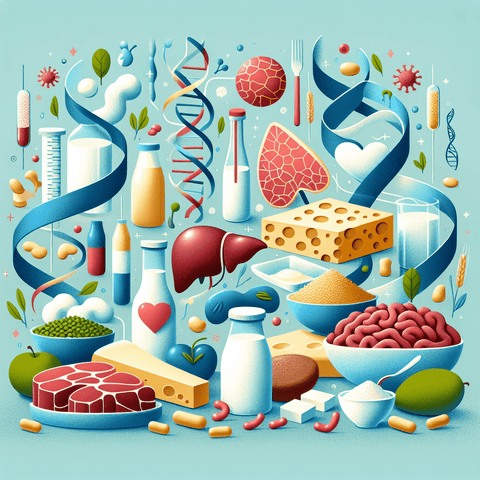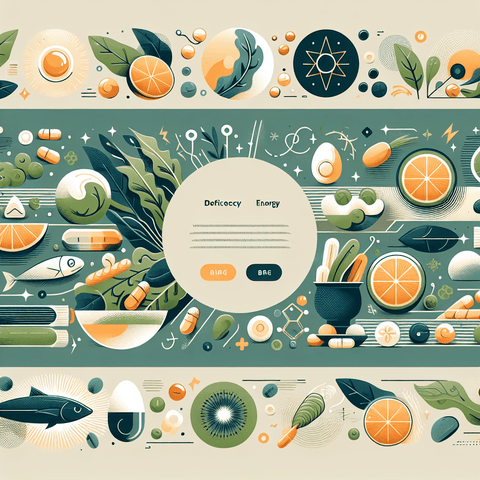Introduction: Understanding Vitamin D and Its Role in Health
Vitamin D, often referred to as the "sunshine vitamin," is a crucial fat-soluble nutrient that plays a central role in numerous physiological processes in the human body. Unlike most vitamins that must be acquired solely through diet, vitamin D can also be synthesized endogenously when ultraviolet B (UVB) rays from sunlight strike the skin and trigger vitamin D production. This unique dual source of acquisition separates vitamin D from other essential nutrients, adding complexity to determining the "best" source.
As a precursor to a hormone (calcitriol), vitamin D supports calcium and phosphorus absorption in the gut, influences immune modulation, supports cell growth, and is thought to contribute to mood regulation and neuromuscular function. While vitamin D deficiency is globally prevalent, it is particularly concerning in areas with low sunlight exposure or among populations with dietary restrictions. Many health authorities—including the European Food Safety Authority (EFSA)—recognize the vital role of vitamin D in maintaining bone and immune health.
Given its physiological importance and the widespread nature of deficiency, determining the best and most reliable source of vitamin D isn’t just a matter of preference but a strategic choice for maintaining long-term health. In this blog post, we will explore the various sources of vitamin D, with a strong emphasis on nutritional supplements, and help you determine the optimal approach suited to your lifestyle and health needs.
Vitamin D and Nutritional Supplements: Why They Are a Crucial Source for Many People
While vitamin D can certainly be obtained through exposure to sunlight and by consuming certain foods, the growing body of evidence suggests that these sources may not be sufficient—particularly for those living in temperate climates, those with darker skin, and individuals who spend a significant amount of time indoors. Nutritional supplements, therefore, emerge as a consistent and controlled method of maintaining adequate vitamin D levels year-round.
The main advantage of vitamin D supplements is predictability. Supplements allow for exact dosing, which can be crucial when correcting a deficiency or maintaining a specific serum vitamin D level. This contrasts with variable sun exposure and inconsistent intake from food sources. Moreover, supplements are widely accessible and offer solutions tailored to individual needs—capsules, softgels, sprays, and drops.
Two types of vitamin D are commonly used in supplements: vitamin D2 (ergocalciferol) and vitamin D3 (cholecalciferol). D2 is often plant-derived and less potent, whereas D3—typically sourced from lanolin (sheep’s wool) or lichen (for vegan products)—is more effective at raising and maintaining serum 25(OH)D levels. Research confirms that D3 is approximately 87% more potent than D2 and has a longer duration of action in the body.
Most public health institutions offer guidelines for daily vitamin D intake: adults generally require between 600 IU (15 mcg) and 800 IU (20 mcg), while higher doses are needed to treat deficiencies. Supplements can easily be adjusted to meet these levels. Furthermore, certain populations such as elderly individuals, those suffering from malabsorption syndromes, and breastfed infants may find it downright essential to complement their diet with high-quality vitamin D supplements.
Emerging research has further strengthened the case for supplementation as a preventive strategy, especially in countries where UV radiation is insufficient for cutaneous synthesis during autumn and winter months. In such scenarios, relying exclusively on sun exposure or diet is inadequate. Products available on Topvitamine.com’s vitamin D category include options suited to different preferences and absorption needs, making it easy to maintain sufficiency.
Sunlight Exposure: A Natural and Vital Source of Vitamin D in Nutritional Life
Sunlight is the most natural and historically primary source of vitamin D. When UVB rays from the sun hit the skin, they trigger a chemical reaction converting 7-dehydrocholesterol (present in the skin) into cholecalciferol (vitamin D3). This inactive form then undergoes conversion in the liver to 25-hydroxyvitamin D and finally becomes the biologically active form, calcitriol, in the kidneys.
Despite being a fundamental source, not everyone can rely on sun exposure for sufficient vitamin D synthesis. Factors such as geographic location (especially latitude), seasonal weather conditions, air pollution, skin pigmentation, age, sunscreen use, time of day, and clothing can significantly influence vitamin D production. For example, people living above 37° latitude experience reduced UVB exposure in winter months, making cutaneous synthesis virtually impossible during this period.
Individuals with darker skin, due to higher melanin content, require significantly longer sun exposure to produce the same amount of vitamin D compared to lighter-skinned individuals. Similarly, the elderly have a reduced capacity to generate vitamin D through the skin. Sunscreen with SPF 30, although highly beneficial in preventing UV damage, can decrease vitamin D synthesis by more than 95% if applied correctly.
Public health guidelines generally recommend 5–30 minutes of direct sun exposure at least twice a week to the face, arms, legs, or back without sunscreen, preferably between 10 a.m. and 3 p.m. However, these suggestions must balance the risk of skin damage, as overexposure to UV radiation is the leading environmental cause of skin cancer.
While sunlight is irreplaceable and has additional benefits (such as supporting circadian rhythms and mental wellness), the variability of exposure renders it an unreliable sole source for vitamin D. In periods of inadequate sunlight, supplementation becomes not just convenient but necessary. Combining sensible sun exposure with vetted products from the Topvitamine vitamin D supplement collection can help ensure optimal levels safely.
Vitamin D Rich Foods: Incorporating Nutrient-Dense Options into Your Diet
Dietary sources of vitamin D can be an excellent complement to sun exposure and supplementation. However, it’s important to recognize that relatively few foods naturally contain substantial amounts of vitamin D. The richest naturally occurring sources include fatty fish such as salmon, mackerel, sardines, and herring. For instance, 100 grams of wild-caught salmon may contain between 600–1000 IU of vitamin D.
Other options include egg yolks (about 40 IU per yolk), beef liver, and cod liver oil, which is exceptionally high in vitamin D (one tablespoon may offer over 1300 IU). In many countries, staple foods such as milk, orange juice, breakfast cereals, and plant-based milk alternatives are fortified with vitamin D, albeit often in small amounts—typically 100 IU per serving.
Incorporating these foods into your diet can help boost your intake, but reaching the recommended daily amount (or therapeutic levels for deficiency correction) rarely occurs through diet alone. As such, these foods serve best as part of a holistic vitamin D strategy, complementing supplements and sun exposure.
To optimize intake from food, individuals can include fatty fish two to three times per week, use fortified products for cooking or baking, and consider adding traditional condiments like cod liver oil. However, because keeping an exact track of IU from food alone is impractical for most, consulting with a nutrition professional and possibly introducing high-quality vitamin D supplements remains a smart choice.
Pairing dietary sources with a reliable product from Topvitamine’s vitamin D product line ensures consistency in maintaining serum 25(OH)D levels year-round and avoids the uncertainties associated with diet and sunlight alone.
Vitamin D Supplements: A Reliable and Convenient Nutritional Source
Given the limitations of diet and sunlight independently, vitamin D supplements provide a reliable, precise, and effortless way to guarantee adequate daily intake. This section delves deeper into why and when supplements should be considered, and how to select a product that works well for your unique health needs.
Individuals should especially consider supplementation if they live at high latitudes, spend much of their time indoors, have darker skin, wear full-body clothing for cultural or religious reasons, are older adults, or suffer from chronic illnesses that impair vitamin D absorption or metabolism. For these groups, meeting vitamin D needs through sunlight and food alone may be unrealistic.
Choosing the right supplement begins with understanding dosage. Daily doses between 1000 IU and 4000 IU are common in over-the-counter formulations, though higher doses may be prescribed under medical supervision for deficiency correction. It's crucial to check the form—vitamin D3 is more bioavailable than D2 and is preferred by most health care professionals.
Another key factor is the supplement's delivery form. Liquid drops are ideal for children and older adults with difficulty swallowing pills, while softgels and tablets are suited for those with regular routines. Spray versions offer rapid absorption and convenience.
Quality assurance is another important criterion. Look for third-party certifications and avoid products with unnecessary fillers or additives. For optimal convenience and verified quality, explore the vitamin D supplements collection at Topvitamine, which includes broad-spectrum products suited for every lifestyle, including vegan, vegetarian, and allergen-free options.
Although rare, vitamin D toxicity can occur, usually due to long-term consumption of extremely high doses. EFSA notes that the tolerable upper intake level for adults is 100 mcg (4000 IU) per day. Hence, consulting a healthcare provider before initiating high-dose supplementation is recommended—especially for individuals managing other health conditions or taking additional medications.
Outdoor Activities: Combining Exercise and Sunlight for Better Vitamin D Levels
Engaging in regular outdoor activity is not only a foundation for cardiovascular, musculoskeletal, and mental health, but also a productive way to integrate sunlight exposure into daily life for vitamin D synthesis. Activities such as walking, jogging, cycling, or gardening expose the skin to natural light, thereby enhancing the body’s capability to produce endogenous vitamin D3.
Spending even 15–30 minutes outdoors several times a week is often sufficient to stimulate natural production, especially during late spring through early autumn in temperate zones. Pairing these brief sun exposures with moderate physical activity has synergistic benefits, including improved bone density, better mood regulation, and enhanced immune responsiveness.
Nevertheless, sun safety remains paramount. Outdoor activities should be timed to avoid solar noon (when UVB intensity peaks), and sunscreen should be used judiciously—providing adequate protection after an initial 10-15 min of sun exposure to maximize safe vitamin D synthesis without risking sunburn or long-term photodamage.
Consider planning hikes, yoga, or outdoor sports in early morning or late afternoon when UV index levels are moderate. Children and elderly participants can benefit significantly from these activities, as moderate sun exposure naturally supports their vitamin D levels without the stress of high-dose supplementation unless clinically indicated.
While sunlight obtained through outdoor activity is beneficial, seasonal variability and inconsistent schedules mean it should complement—not replace—other vitamin D sources such as diet and supplementation. Especially in winter, integrating high-quality products from the Topvitamine vitamin D catalog ensures that vitamin D levels remain optimal regardless of changes in sun exposure routines.
Addressing Vitamin D Deficiency: Effective Remedies and Lifestyle Strategies
Vitamin D deficiency is alarmingly common, with research indicating that more than 1 billion people globally have insufficient levels. Symptoms of deficiency often go unnoticed but can include fatigue, muscle aches, frequent infections, and, in severe cases, bone disorders like osteomalacia or rickets in children.
The first step in addressing deficiency is through testing. A serum 25(OH)D blood test is the best marker to assess vitamin D status. Levels below 20 ng/mL (50 nmol/L) are generally deemed insufficient, while optimal levels range from 30 to 50 ng/mL (75–125 nmol/L) depending on individual health status and risk factors.
Once identified, deficiency is usually treated via high-dose supplementation under medical supervision. Interim regimens often involve dosages ranging from 2000 IU to 10,000 IU daily, depending on baseline level, body weight, and absorption capability. Maintenance doses resume after normalization is achieved, typically via OTC products available from reputable sources like Topvitamine.com.
In tandem with supplementation, lifestyle strategies such as increasing dietary sources and responsible sun exposure can help prevent future recurrences. Regular monitoring—especially every 3 to 6 months after beginning supplementation—is key to ensuring levels remain within optimal range while avoiding toxicity.
Those with chronic illnesses, obesity, or taking certain medications (such as anticonvulsants or glucocorticoids) may require ongoing support and customized regimens. In these cases, working closely with a healthcare provider can fine-tune a safe and effective long-term vitamin D management plan.
Conclusion: Choosing the Best Source of Vitamin D for Your Needs
There is no one-size-fits-all answer to the best source of vitamin D—it depends on individual lifestyle, geographic location, dietary habits, and health status. Sunlight is natural and beneficial but inconsistent; dietary sources are nourishing but often inadequate. That’s why high-quality, well-formulated vitamin D supplements offer an essential solution to bridge the gap, providing assured, controllable, and safe daily intake.
The most effective strategy is likely a combined approach: moderate sun exposure when possible, enrichment of the diet with vitamin D-rich foods, and consistent supplementation based on personalized needs. With the aid of healthcare providers and trusted supplement sources such as Topvitamine, individuals can maintain robust vitamin D levels to support immune strength, bone health, and overall wellness.
Informed choice is the foundation of optimal health. By understanding each source's benefits and limitations, you can create a personalized plan to ensure your body receives the vitamin D it needs—safely, naturally, and effectively.
Q&A Section
Q: What is the most reliable source of vitamin D?
A: Supplements are considered the most reliable source due to dosage accuracy and year-round availability. Especially D3-based supplements offer superior bioavailability and consistency.
Q: Can I get enough vitamin D from the sun alone?
A: Possibly, but it depends on factors like where you live, your skin type, the season, and how much time you spend outside. Many people need supplements to maintain adequate levels, especially during winter.
Q: Which foods are highest in vitamin D?
A: Fatty fish (like salmon and sardines), cod liver oil, egg yolks, and fortified foods such as milk and cereals are top dietary sources.
Q: How can I choose the right vitamin D supplement?
A: Look for D3 (cholecalciferol), ensure proper dosage, check for third-party testing, and choose a form that suits your lifestyle—such as drops, capsules, or sprays from trusted providers like Topvitamine.com.
Q: Is vitamin D toxicity a concern?
A: Yes, but it’s rare and usually results from excessively high intake over time. Stick to recommended doses and consult a healthcare provider before taking high-dose supplements.
Important Keywords
- Best source of vitamin D
- Vitamin D supplements D3
- How to get enough vitamin D
- Sunlight and vitamin D
- Foods with high vitamin D
- Vitamin D deficiency symptoms
- Topvitamine vitamin D supplements
- Natural sources of vitamin D
- Vitamin D dosage
- Vitamin D rich diet



